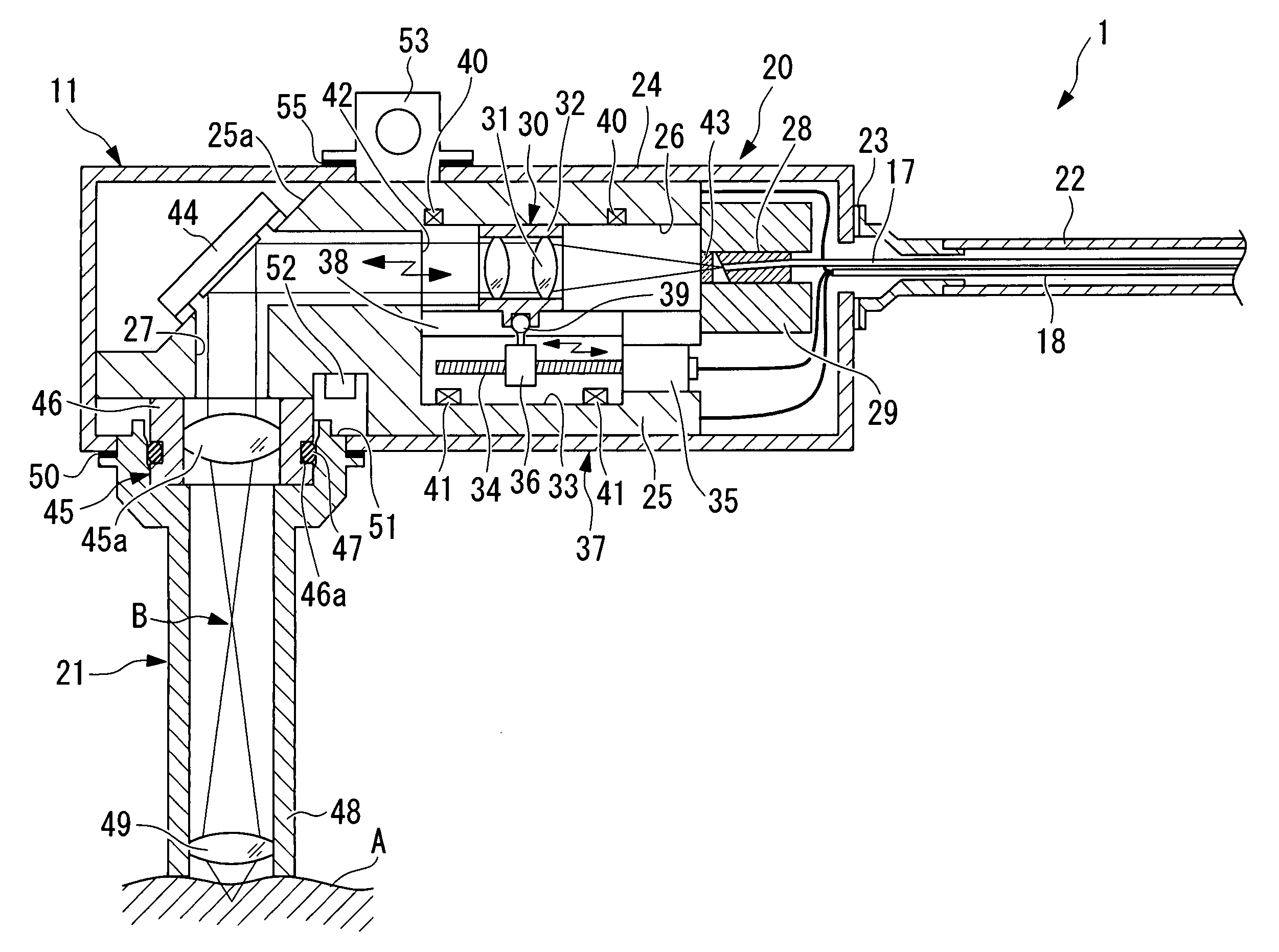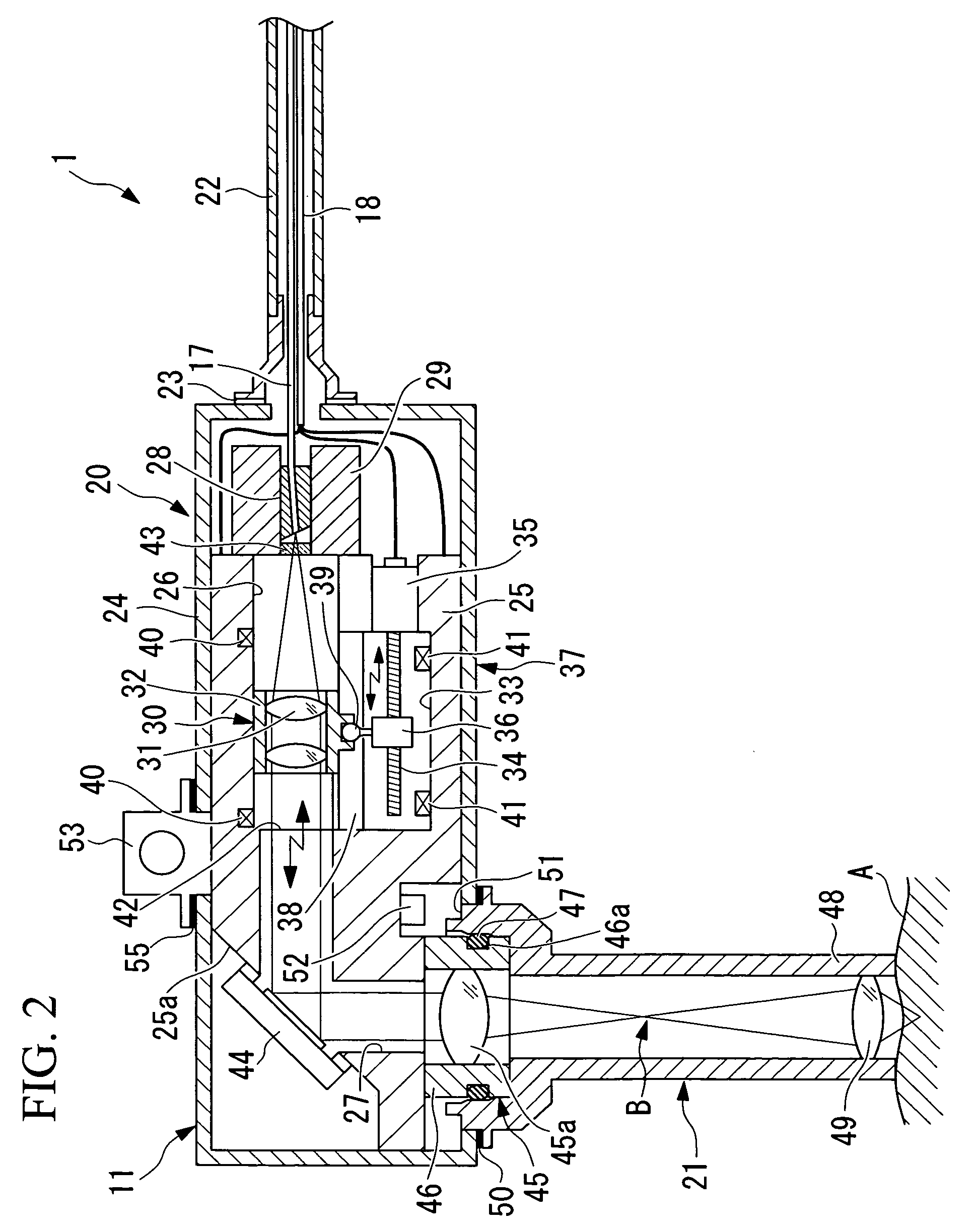Optical-Scanning Microscope Examination Apparatus
a microscope and optical scanning technology, applied in the field of optical scanning microscope examination apparatus, can solve the problems of blurred image, difficult time-lapse observation for an extended period of time, and inability to acquire clear images, so as to reduce the burden on the living organism and reduce the projecting area
- Summary
- Abstract
- Description
- Claims
- Application Information
AI Technical Summary
Benefits of technology
Problems solved by technology
Method used
Image
Examples
second embodiment
[0167]Next, a scanning microscope examination apparatus 70 according to the present invention will be described below with reference to FIG. 10.
first embodiment
[0168]In the description of this embodiment, parts having the same configuration as those in the scanning microscope examination apparatus 1 described above are assigned the same reference numerals, and a description thereof is omitted.
[0169]The scanning microscope examination apparatus 70 according to this embodiment differs from the first embodiment in that, whereas the scanning microscope examination apparatus 1 according to the first embodiment moves the collimator lens unit 30, the ferrule 28 (end portion of the light-transmitting member) to which the end of the optical fiber 17 is secured is moved in the optical-axis direction.
[0170]The ferrule 28 is disposed in such a manner that it can slide inside the first through-hole 26. In addition, an actuator 74 formed of a rod 71, a plunger 72 that makes the rod 71 project in the optical-axis direction, and a connecting member 73 connected to the rod 71 of the plunger 72 are provided. By engaging the connecting member 73 with a groo...
third embodiment
[0174]Next, a scanning microscope examination apparatus 80 according to the present invention will be described below with reference to FIGS. 11 and 12.
[0175]In the description of this embodiment, parts having the same configuration as those of the scanning microscope examination apparatus 1 and 70 according to the second embodiment are assigned the same reference numerals, and a description thereof is omitted.
[0176]Whereas the scanning microscope examination apparatuses 1 and 70 according to the first and second embodiments move the collimator lens unit 30 or the ferrule 28 in the optical axis direction, in the scanning microscope examination apparatus 80 according to this embodiment, the collimator lens unit 30 and the ferrule 28 are fixed to the chassis 20, and a pupil-projection lens unit 81 is moved along the optical-axis direction.
[0177]The pupil-projection lens unit 81, in which a lens barrel 81b, including a pupil-projection lens 81a, is disposed in such a manner as to be ca...
PUM
 Login to View More
Login to View More Abstract
Description
Claims
Application Information
 Login to View More
Login to View More - R&D
- Intellectual Property
- Life Sciences
- Materials
- Tech Scout
- Unparalleled Data Quality
- Higher Quality Content
- 60% Fewer Hallucinations
Browse by: Latest US Patents, China's latest patents, Technical Efficacy Thesaurus, Application Domain, Technology Topic, Popular Technical Reports.
© 2025 PatSnap. All rights reserved.Legal|Privacy policy|Modern Slavery Act Transparency Statement|Sitemap|About US| Contact US: help@patsnap.com



